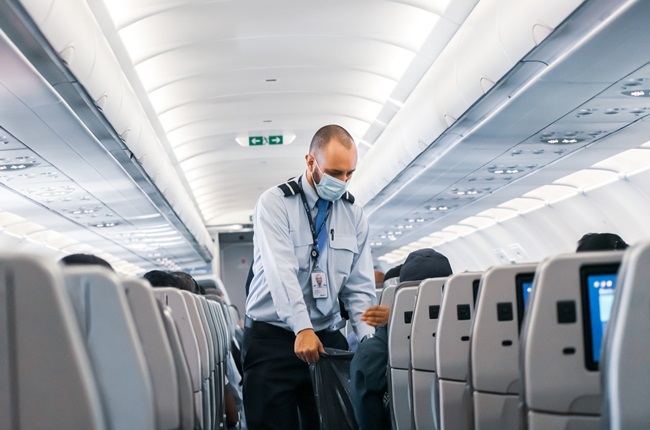The tourism industry is slowly opening up again. And despite the new standards and protocols that come along with it, technological innovations will continue to help the industry adapt and deliver the best customer experience possible.
Tourism was one of the worst hit industries when the pandemic began last year. The coronavirus has caused a major slump that has endangered 50 million tourism jobs worldwide and could cost the global economy at least $4 trillion by 2021. Once the pandemic is under control, it may take around ten months for the tourism industry to grow again.
To help get the industry back to normal, the World Travel and Tourism Council is calling on governments to remove/simplify visas, cut travel taxes, and give incentives. Various technological innovations are also being used by businesses in the industry in order to make traveling safer and more convenient for people. Below are a few examples of these:
Augmented Reality and Virtual Reality
The use of AR and VR can help add to the traveling experience or act as an alternative way to travel. AR and VR allow you to try out attractions before booking a ticket or adding it to your itinerary. This sometimes comes in the form of 360-degree videos to showcase locations. British Columbia’s travel bureau, Destination BC, uses these to show viewers places such as the ice cave in Whistler. Some destinations offer VR tours that can educate you more about the location. Viator has small-group 3D VR tours for ruins such as Pompeii and Palatine Hill.
If you’re still not comfortable with the idea of traveling, there are VR travel apps that you can use whether you have VR gear like Oculus Quest or even just a smartphone. The National Geographic Explore VR lets you see two very different places, namely Antarctica and Machu Picchu. There are also other apps that show you only specific countries, such as Nepal VR and Egypt VR 360. These apps allow you to travel the world without having to leave your home.

Photo by Reshot
Robots
Robots come in many forms, from chatbots to human-like androids. Chatbots are among the most common, as they are a huge help to businesses. They’re available 24/7 and have almost instantaneous response times. Robots are an emerging trend in the midst of the pandemic because they can now assist people who are seeking self-service methods. They can also assist in some jobs that a human employee would typically do, such as greeting customers.
Modern robotic technology has rapidly advanced due to developments in PCB design. Specifically, robotic engineers are turning to rigid-flex PCB designs which can improve signal transmission without loss and jitter, address connection problems, free up space while reducing overall weight, and make the board vibration-proof and compatible with other moving parts. This has caused production costs to decrease, making robots more accessible than ever. For instance, the Hilton has developed a robot concierge that uses speech recognition technology to interact with visitors.
Recognition technology
Recognition technology will make purchases and interactions smoother while staying contactless. The technology includes facial recognition, fingerprint recognition, retina scanning, and other biometric identification. This technology is actually one of the most important demands by hotel guests. Biometric identification helps increase security as well.
Certain airports, such as JetBlue, already use facial recognition technology to have their identity checked and board flights by standing in front of a camera. This removes the need for boarding passes. In Japan, Henn-na Hotel is known as the world’s first robot-staffed hotel – their whole system functions through the use of voice and facial recognition alongside AI.

Photo by Reshot
Internet of Things
The IoT is essentially internet-based connectivity between devices that allow them to share data with one another. For the tourism industry, this means being able to further automation in order to streamline processes, which will lead to higher customer satisfaction. IoT-connected devices allow for more personalization. For example, in-room tablets in hotels let a guest adjust the room’s temperature, control the heaters, and schedule wake-up calls.
Smartphones can also be used to maximize the IoT when traveling. They allow for better navigation processes in hotels or airports. They can also be used for keyless technology in hotels. In airports, sensors can be used to automatically send alerts to a person’s phone to inform them that their luggage is nearby. Beacon technology can be integrated with smartphones, allowing travel companies to easily send location-specific information to a tourist.
Big data
The tourism industry is huge, and thus also collects a massive amount of data – from a person’s current bookings to which services a customer uses the most. This huge amount of data, simply termed big data, is analyzed to improve personalization to attract customers. For example, a hotel can combine internal data (such as past occupancy rates, room revenue, and current bookings) with external data (like local events and holidays) in order to predict and anticipate the demand. Because of this, they’ll be able to manage prices and room rates to maximize revenue.
However, a concern that customers do have regarding this is data privacy. Most customers don’t trust travel companies to use their personal information correctly. While they do want a personalized experience, they’re most comfortable with their data being used only if they themselves have shared it with the companies via official forms. Anything indirectly sourced, such as credit scores and past booking behaviors with other companies, will make them unlikely to trust the company.
The tourism industry is slowly opening up again. And despite the new standards and protocols that come along with it, technological innovations will continue to help the industry adapt and deliver the best customer experience possible.
Main photo by Lukas Souza on Unsplash



























































































































































































































